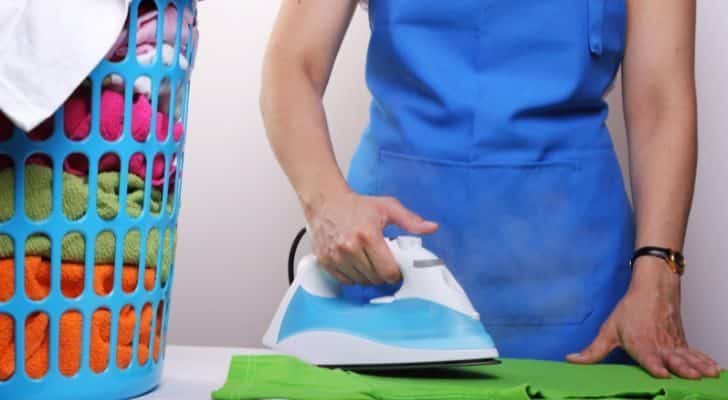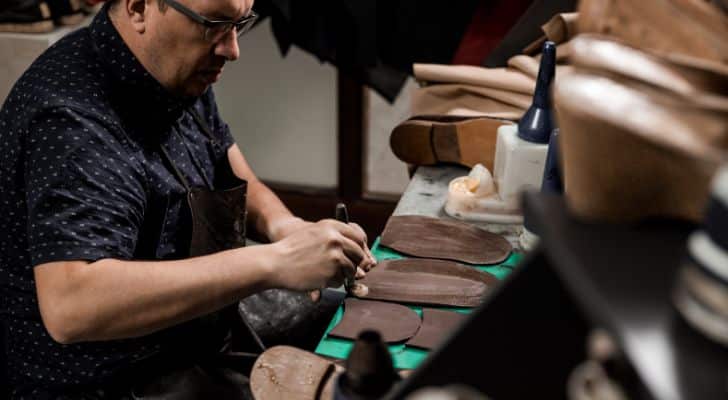These boots were made for walking, and that’s just what they’ll do!
As it turns out, they’re also pretty good for all kinds of activities!
Dr. Martens, Doc Martens, Docs, DMs; these timeless boots have gone by many different names over the years.
One thing that hasn’t changed, though: their rugged simplicity.
If you’ve ever wondered about the origins of Docs or how they became so popular, then read on – as we sure have a treat for you!
Doc Martens have been around since the 1940s

Doc Martens were invented at the end of WWII by Dr. Klaus Märtens, a German army doctor who had broken his foot.
The standard-issue military boots simply weren’t comfortable enough, so he made his own.
He cobbled a prototype using old rubber tires for soles, and scraps of leather scavenged from war-torn German cities.
By 1947, he had paired up with an old university friend, Herbert Funck, who helped Märtens develop the design further and find more customers.
The first buyers of Doc Martens were German housewives.

Specifically, more than 80% of Doc Martens sales within the first ten years of the company being in business were to homemakers over the age of 40.
They particularly liked the boots because of their cushioned soles, which were pretty handy considering the amount of time the average housewife spent on her feet!
By 1952, sales had grown so much that Märtens and Funck opened a factory in Munich.
They didn’t reach British shores until the 1960s.

Märtens and Funck’s boots were getting so popular that they decided to go international.
In 1959, a British footwear manufacturer called R. Griggs Group bought the exclusive rights to make and sell the boots in the UK.
In addition to changing the name of the boots to Dr. Martens to make it more palatable to the post-war British public, Griggs also introduced the iconic yellow stitching and slightly modified the shoe’s shape.
The working classes were the first people to adopt Doc Martens in the UK.

Doc Martens were hardy, reliable, and, most importantly, they were comfortable if you needed to spend all day on your feet.
Factory workers, police officers, and mail carriers were some of the first to adopt the iconic boots.
At around 2 pounds a pair, they were cheap enough for anyone in a low-income bracket to get their hands on.
They gained a bad reputation for a while.

Once again, Doc Martens are tough, and their steel-capped toes can do some damage if you know how to use them.
This was a huge selling point for anyone who wanted to get up to no good, and skinheads, punks, and a wide variety of countercultures were big fans of Docs.
Skinheads, particularly the ultra-right-wing ones in the 70s and 80s, almost permanently ruined the brand’s reputation.
Had it not been that everyone else (including the police they were fighting with) were wearing them, that might have been the case!
The company nearly went broke.

With the decline of grunge, punk, and alt-rock in the early 2000s, Doc Martens suddenly found themselves with rapidly shrinking profits.
In 2003, Griggs decided to pull the plug and moved its factories to China.
The move saved the company, but thousands of people lost their jobs, and people have debated ever since whether the quality is the same as it used to be.
In 2004, the original factory in Cobbs Lane, Northamptonshire, was reopened to produce “vintage-style” boots, but the number produced is astronomically less than what’s made in China.
Pope John Paul II once ordered custom pairs of Doc Martens.

Not just for himself, either! He ordered one hundred pairs of Doc Martens in the 90s for staff all over the Vatican in various colors and styles.
Of course, he also splurged on himself with a nice pair of white brogues.
Strangely enough, while this definitely did happen, no photos of anyone in the Vatican wearing the iconic shoes have ever surfaced.
Doc Martens are truly timeless.

Sure, they had a few troubled years in the early 2000s, but that’s no longer the case.
This timeless brand managed to stick to its iconic style while adapting to the times just the right amount, and it’s paying off!
From March 2021 to March 2022, an eye-watering 14.1 million pairs of Docs were sold, more than any of the company’s previous 62 years in business.
While sales are still the highest in the UK, the boot’s popularity is still growing in international markets!
Look, at this point, it’s hard to imagine a future without Doc Martens.
They may have morphed over time from the most useful piece of footwear one could own into the next big thing in fashion, but that’s nothing to do with the actual boot itself.
The overall design hasn’t changed that much; we have.
With that in mind, it makes perfect sense that the ways we wear our Docs have too.
What’s most exciting is imagining what the future of Doc Marten boots could look like!


















